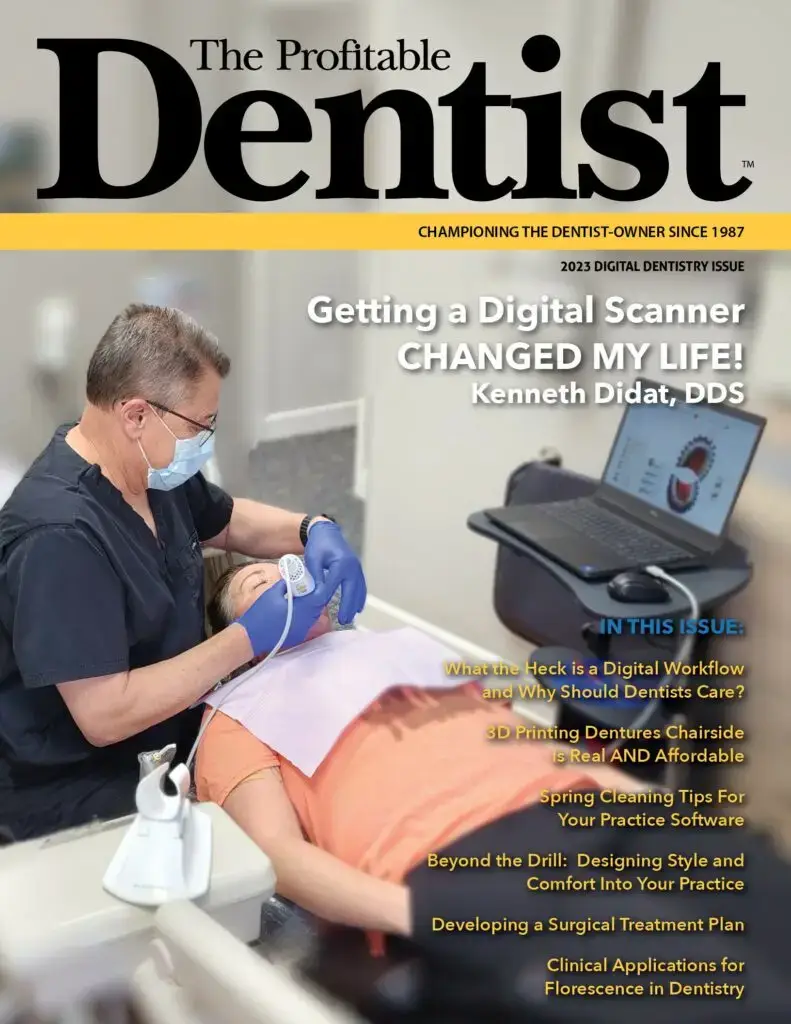Creating and refining your inventory management system is not the most exciting item on a dental office’s to-do list. Having an effective system can save a practice thousands of dollars per year, eliminate the stress and frustration in ordering product, running out of necessary product, reducing waste, and help provide better service to patients.
By taking control of all the variables associated with your order and inventory management system, you will be less reliant on any individual supplier. Many offices now know that they pay higher prices for their products, but still choose to buy from higher priced suppliers solely because those suppliers deliver product next day. If you only reorder after you’re practically out; and order for next day delivery from high priced suppliers, the good news is that you’re already using Just-In-Time inventory. Unfortunately, you’re not using it to your benefit and may actually be being held hostage by it. Just like when you go buy a car, you wouldn’t tell the dealer that you only care about the interest rate or number of payments or monthly payment, (and not the purchase price) – you shouldn’t sacrifice paying a premium on dental supplies because you need everything tomorrow.
Once you affirm to yourself that your primary determinant in selecting a supplier is delivery time, you’re also eliminating choice and accepting that you will pay much higher prices. By creating an Inventory Management system, “lead time” can easily be factored into a simple formula that you control, and not something you pay for.
By implementing these simple practices, you can actually reduce the likelihood of running out of product, increase accountability amongst staff, and save thousands of dollars per year.
1. Identify what you need to control
Include expensive items, items with a shelf life, high-cost-to-inventory items, even if they are inexpensive (large cases of gauze, paper towels, etc.)
2. Reduce stock-outs and overstocking at the same time
Many practices order dental and office supplies using the “eyeball” method; or worse, the “oh no, we’re almost out” method. While usage of individual items certainly change over time and exact monthly usage cannot always be predicted with great accuracy, certain items used in a dental practice are fairly consistent. Identify those first. They are typically the items you use the most. For everything else that you don’t use as frequently, it is imperative that you know two things:
A. How many days from the moment you order it from your preferred supplier of the item, it will take to receive (build in some room for vendor back-orders, shipping delays, etc.)
B. How many units you expect to use per day.
Finally, multiply the days to receive the order by the daily usage and add in any safety stock you think makes sense. This is your Reorder Point (ROP).
Once your stock gets to this quantity, it’s time to reorder. Make sure to factor in all of your inventory, both the main supply closet and any stocked operatory cabinets.
3. Know your usage and build accountability
Log items being taken out. Have a common list of all items you should control accessible to anyone who is authorized to take product out of inventory; whether it is the dental assistant preparing a tray or restocking operatory inventory, or the doctor grabbing the new bonding kit she just ordered. This can be as simple as a printed InventoryControl Log in your stock room; or as complex as a retina-scan-enabled vending vault to log each item out. The principle remains the same -when you take a controlled item out of inventory, ensure it is logged every time. You need only a few pieces of information to be logged: Item, quantity, date and initials of whoever is taking the product. People naturally feel more accountable when putting their name on something, and starting the act of taking an item out of inventory with an accountable mindset is a good thing, and can have the added benefit of reducing waste and eliminating shrinkage.
4. Automatic trigger your ordering
A simple technique that some offices use to build some redundancy is to use a simple card system. If your Reorder Point for A2 composite is 7 packs – in your primary stock of this item, place an index card between the 7th and 8th packs. Once the 8th pack is taken out of inventory, the card will be the signal that it’s time to reorder the item or add it to the soon-to-order list. Keep a small basket next to the Inventory-Control Log for these cards to be placed in as they are exposed, and have whoever is responsible for reordering them check the basket regularly. Whether you keep inventory in a common stockroom then fill operatory cabinets, mobile carts or grab on an as-needed basis, the critical element is to have a system that tells you what you have, and when you need to reorder.
While your inventory-control system may not be as complex as Toyota’s famous Kanban method, you can still realize the many benefits of a Just-in-Time system. Once you build an inventory management system that controls for the relevant variables, you can then effortlessly and effectively take control and make whatever changes you need to minimize your supply spending and maximize your profitability.




